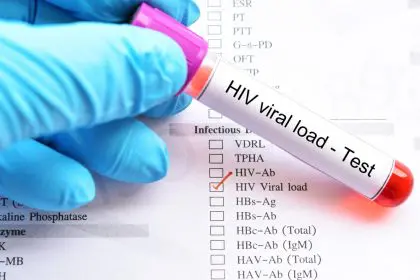Ankle swelling might seem like a minor inconvenience after a long day on your feet, but certain patterns of swelling can signal serious heart problems that demand immediate medical attention. Understanding the difference between harmless puffiness and dangerous cardiovascular warning signs could be the key to protecting your heart health.
The connection between ankle swelling and heart function runs deeper than many people realize. When your heart struggles to pump blood effectively throughout your body, fluid begins accumulating in your lower extremities, creating telltale signs that something more serious is happening inside your chest.
1. Persistent swelling that doesn’t improve with elevation
Normal ankle swelling typically resolves when you elevate your feet above heart level for 15 to 20 minutes. However, when swelling persists despite elevation, rest, and reduced salt intake, your heart may be struggling to maintain proper circulation throughout your body.
This type of stubborn swelling often indicates that your heart’s pumping mechanism has become compromised, preventing the efficient return of blood and fluids from your extremities back to your cardiovascular system. The swelling may feel firm to the touch and leave indentations when pressed, a condition known as pitting edema.
The persistence of this swelling often worsens gradually over weeks or months, making it easy to dismiss as a natural part of aging or weight gain. Many people adapt their daily routines around increasingly swollen ankles without recognizing the cardiovascular implications of this progressive symptom.
2. Swelling accompanied by breathing difficulties
When ankle swelling occurs alongside shortness of breath, especially during routine activities or while lying flat, your heart may be failing to pump blood efficiently enough to meet your body’s oxygen demands. This combination of symptoms often indicates that fluid is accumulating not only in your ankles but also in your lungs.
The breathing difficulties may start subtly, perhaps requiring an extra pillow at night or feeling winded after climbing stairs that never bothered you before. As heart function deteriorates, these breathing challenges become more pronounced and occur with less physical exertion.
This dual symptom presentation creates a concerning cycle where reduced physical activity due to breathing difficulties leads to further cardiovascular deconditioning, while the underlying heart problem continues to worsen without proper medical intervention.
3. Rapid weight gain with ankle swelling
Sudden weight gain of three to five pounds within a few days, combined with ankle swelling, often signals dangerous fluid retention related to heart problems. This rapid accumulation of fluid weight differs significantly from typical weight fluctuations related to diet or hormonal changes.
The weight gain associated with heart-related fluid retention typically occurs without changes in eating habits or physical activity levels. The added weight comes entirely from excess fluid that your compromised cardiovascular system cannot properly process and eliminate through normal kidney function.
This type of weight gain often feels different from other weight changes, accompanied by a sense of fullness or bloating that extends beyond your ankles to include your abdomen, hands, or face. The combination creates an overall feeling of heaviness that many people describe as being “waterlogged.”
4. Ankle swelling worse in the evening with morning improvement
While some daily variation in ankle size is normal, a dramatic pattern where your ankles become significantly more swollen by evening and improve overnight may indicate that your heart is struggling to maintain adequate circulation during active hours.
This pattern suggests that your heart can keep up with circulation demands while you’re lying down and inactive during sleep, but struggles to maintain proper fluid balance when you’re upright and moving throughout the day. The gravitational challenge of pumping blood back up from your feet becomes too much for a weakened heart.
The evening worsening often becomes so predictable that people begin planning their daily activities around their ankle swelling, avoiding social events or physical activities later in the day when the swelling becomes uncomfortable or embarrassing.
5. Swelling that begins in one ankle and spreads
Heart-related ankle swelling typically affects both feet equally, but when swelling starts in one ankle and gradually spreads to the other, it may indicate a more complex cardiovascular problem involving circulation issues or blood clots that could affect heart function.
This asymmetrical pattern often progresses systematically, starting with mild puffiness in one ankle that gradually becomes more pronounced before affecting the opposite foot. The progression may take weeks or months, making it easy to attribute to minor injuries or changes in activity level.
The uneven presentation of swelling can also indicate problems with the venous system that supports heart function, including issues with the large veins that return blood to the heart or problems with the valves that prevent blood from flowing backward away from the cardiovascular system.
Understanding the heart connection
The relationship between ankle swelling and heart health centers on your cardiovascular system’s ability to maintain proper fluid balance throughout your body. When your heart cannot pump blood efficiently, several mechanisms contribute to fluid accumulation in your lower extremities.
Your heart’s reduced pumping capacity means less blood returns to your cardiovascular system from your feet and legs, allowing fluid to leak from blood vessels into surrounding tissues. Simultaneously, your kidneys respond to reduced blood flow by retaining more sodium and water, further contributing to fluid accumulation.
The body’s compensation mechanisms, designed to help maintain blood pressure and circulation, can actually worsen the swelling problem by increasing overall fluid volume while your heart’s ability to manage that increased volume continues to decline.
When ankle swelling becomes an emergency
Certain presentations of ankle swelling require immediate medical evaluation, particularly when accompanied by chest pain, severe breathing difficulties, or fainting episodes. These combinations of symptoms may indicate acute heart problems that could be life-threatening without prompt intervention.
The development of ankle swelling that progresses rapidly over hours rather than days or weeks also warrants urgent medical attention, as this pattern may indicate a sudden change in heart function or the development of dangerous complications.
Additionally, ankle swelling accompanied by irregular heartbeat, persistent cough, or extreme fatigue represents a constellation of symptoms that collectively suggest serious cardiovascular compromise requiring professional evaluation and treatment.
Taking action for your heart health
Recognizing the connection between ankle swelling patterns and heart health empowers you to seek appropriate medical care before cardiovascular problems become life-threatening. Early intervention can often slow or reverse heart problems while they remain manageable.
Monitoring your ankle swelling involves more than casual observation. Taking daily measurements, tracking weight changes, and noting accompanying symptoms creates valuable information that can help healthcare providers assess your cardiovascular risk and determine appropriate treatment strategies.
The key to protecting your heart health lies in understanding that persistent, progressive, or concerning patterns of ankle swelling deserve the same serious attention as chest pain or other more obviously cardiac symptoms. Your ankles may be providing the earliest and clearest warning that your heart needs help.













